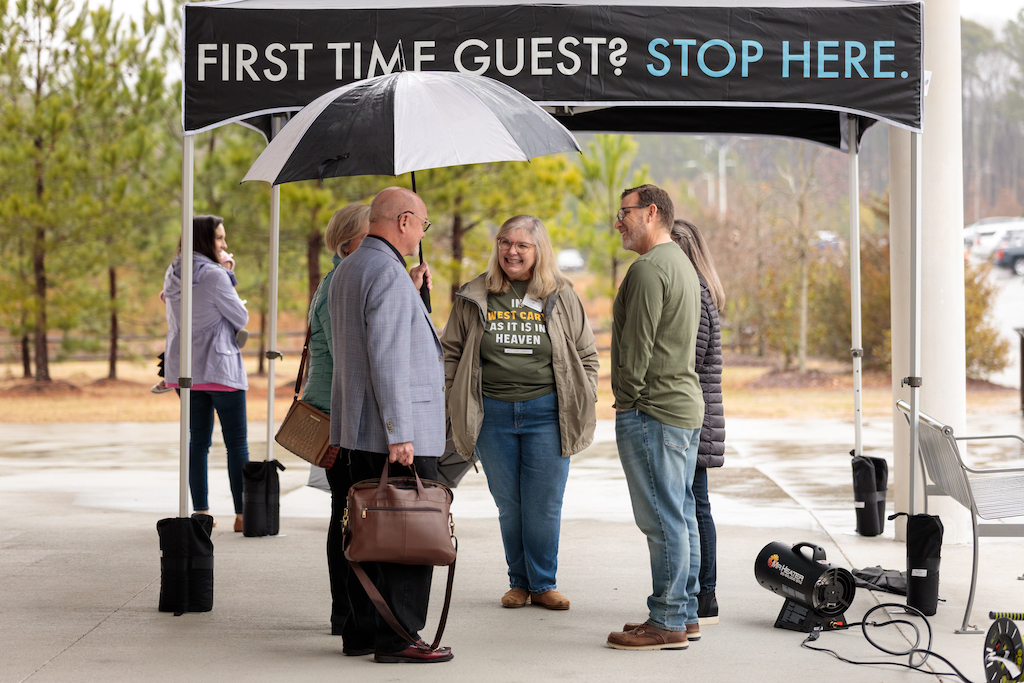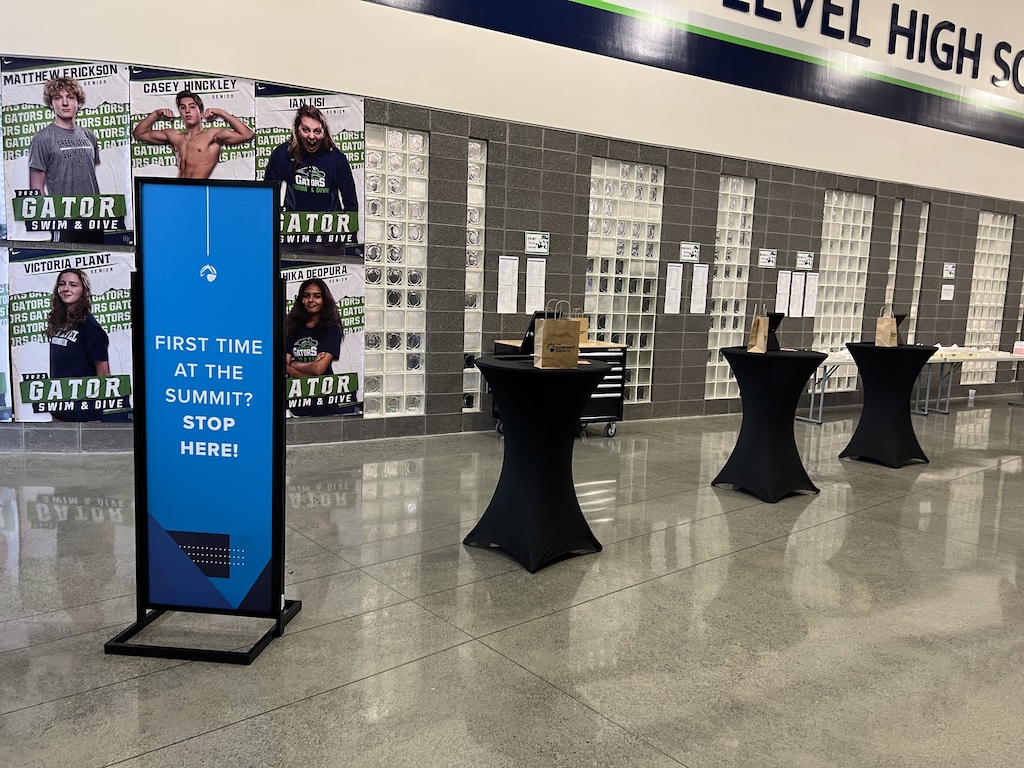Why, When, and How to Have a Weather Rotation Plan

If you’re reading the blog in real-time and feel like I have a current obsession with rain, it’s because I have a current obsession with rain.
I’ve rediscovered that very few things split a Guest Services team’s opinion like a rainy or cold morning. (And we’re officially in a humid subtropical climate…don’t even get me started on those poor frozen folks in a humid continental climate.)
In recent posts, I talked about our Guest Services team’s rain plan, and a few products I recommend to help deal with the weather. In this post, I thought it might be helpful to go into a little more detail about weather rotation plan (WRP): what it is, why you should have one, and the nuances of making it all work.
For the purposes of this post, the WRP will deal specifically with our First-Time Guest Tent, and how we accommodate guests and volunteers when the radar isn’t cooperating. (Our Parking Teams and Outer Entry Teams have to brave the elements a bit more, because they’re assisting guests from the time they pull into the parking lot until the time they enter the building.)
Here is our Why, When, and How behind our WRP:
Why, part 1: know the philosophy behind your tent.
Our First-Time Guest Tent is designed to give first-time guests a neutral spot that they can flock to before they enter an unfamiliar building. Because of the wording and the obnoxiously-in-the-way setup of the tent, a FTG knows that’s the place for them. The tent serves as a visual cue and a “come this way” factor.
What that means is, we want the tent outside whenever possible. FTGs are still going to show up on cold and rainy days, so we want them to know that we have a plan for them. Any time a tent simply can’t go outside – usually due to strong winds – we see a sizable drop in our FTG numbers. I don’t think that’s because guests aren’t coming; it’s that they didn’t know where to go when they arrived.
Why, part 2: prioritize guest comfort before volunteer comfort.
Don’t get me wrong: we love our volunteers. We want to equip them well and treat them well. But if we are going to do whatever it takes to reach all people, we have to sacrifice our own comfort so that our guests might be comfortable.
Having said that, a FTG doesn’t have a special outer layer that causes them to be warm and toasty on a cold and rainy weekend. So yes, we want them to stop at the tent, but we don’t necessarily need them to stay at the tent. And that’s where the heart of the WRP comes into play.
When: know your temperature / precipitation threshold.
Our official FTG Tent Weather Guidelines doc doesn’t give absolutes, but rather rules of thumb. The idea is, if it’s at all possible to remain outside, do so.
However, we’ve set our ranges to below 50 degrees and above 90 degrees. Even in that, we know that 55 degrees and sunny and 55 degrees and overcast are two vastly different types of 55 degrees.
How, part 1: setting it up.
Let’s say you are in the process of getting your campus ready on a Sunday morning, it’s 31 degrees, it’s overcast, and it’s just miserable outside. How do you put this into place? Two stations are required.
Station 1: outside. Put your tent up as usual. If you have an obnoxiously in-the-way space that’s covered, feel free to stick the tent under there to protect even more from the rain. Put the appropriate heating elements underneath. And send a couple of volunteers (in coats and with umbrellas) outside.

Station 2: inside. Just inside your entrance – assuming you have the room – put all of the other elements of your FTG tent. For us, that means three pub tables with iPads for check-in / data capture, our workstation, and a sign that only goes up when the tables go in (when we’re outside, the tent itself functions as a sign).

How, part 2: making it work.
Now for the fun part: helping your volunteers create a seamless experience for your guests. A WRP does not mean that you have a series of handoffs: “Hey thanks for coming. Keep walking. Go through those doors. Stop at the tables on your left.” A guest likely won’t do that, and even if they do, they’re forced to reintroduce themselves and feel like a brand new outsider all over again.
Instead, your FTG team should make sure they’re doing the rotation part of the Weather Rotation Plan. As mentioned above, a couple of volunteers are outside at the tent. As a FTG approaches, one volunteer (let’s call them Vol #1) can say something like:
Good morning! We’re so glad you’re here. Hey, it’s freezing out here. Let me walk you inside where we have a gift for you.
And then, Vol #1 heads inside with the FTG, leaving Vol #2 outside. As Vol #1 goes in, a Vol #3 on the inside throws on a coat and goes out.
But in all cases, the volunteer who first greeted the FTG stays with the FTG: walking them inside, handing off a gift and getting information, walking them to the kids area, giving them an “as we go” tour of the space, and finally handing them off at the auditorium.
What we’ve found is a WRP honors our guests and honors our volunteers. No one volunteer is outside for a ridiculous amount of time, and every guest feels extra-honored that we’re caring for them on days when the weather is less than ideal.
Photo credits: Jonathan Bullock and Genevieve Fu
